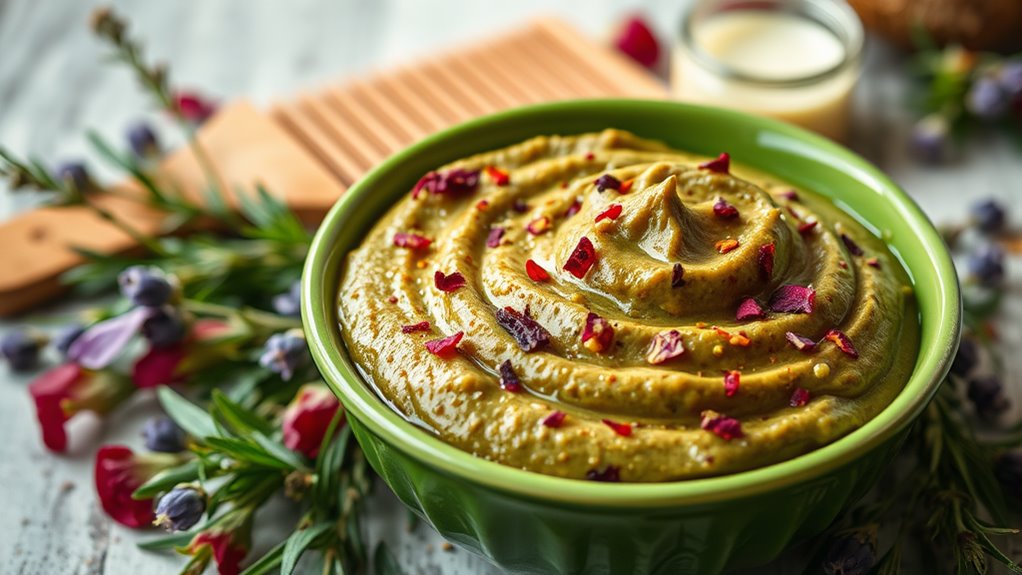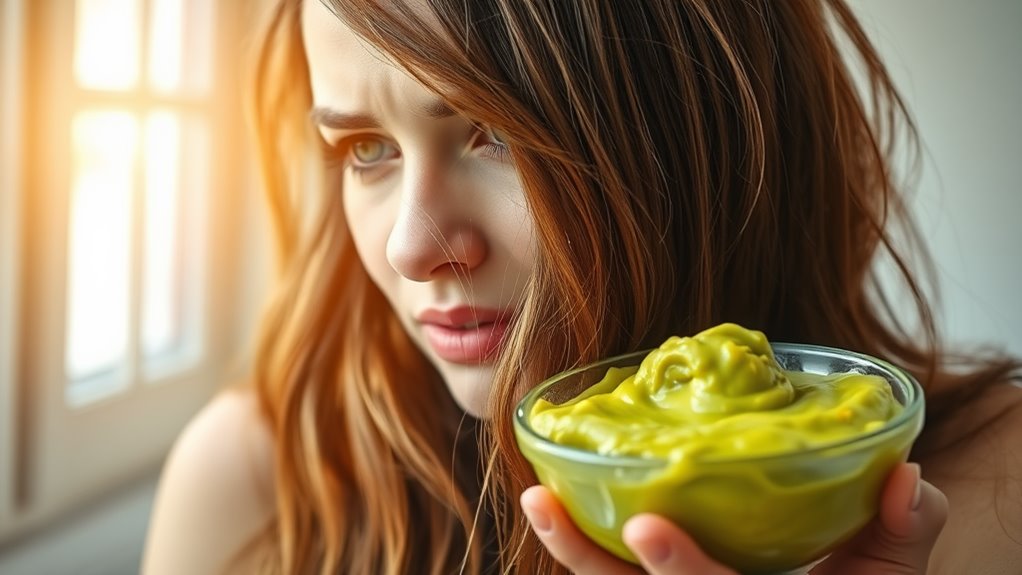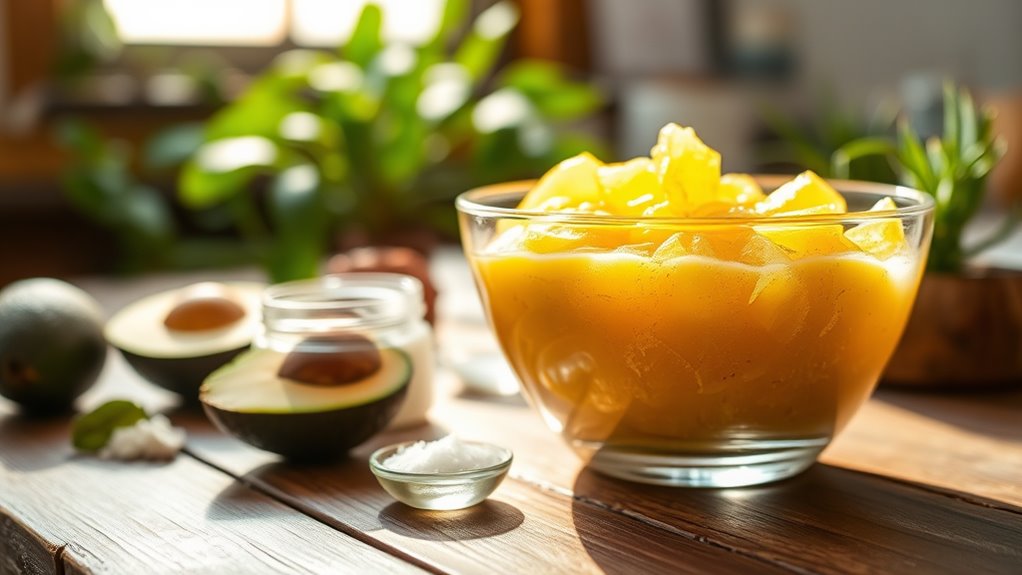Why Everyone Is Raving About This DIY Hair Treatment!
Everyone’s raving about DIY hair treatments because they’re effective, affordable, and tailored to personal needs. With simple, natural ingredients like apple cider vinegar and tea tree oil, you can tackle issues like oily hair without harsh chemicals. People have seen incredible results, from silky smooth locks to added shine. Plus, creating your own hair solutions can be satisfying and eco-friendly. Want to find out which ingredients can transform your hair? There’s more to discover!
The Rise of DIY Hair Treatments
As more people seek natural alternatives to commercial products, DIY hair treatments have gained popularity. You might find yourself drawn to these homemade solutions, which often use simple ingredients you already have at home.
By creating your own hair treatments, you’re not only avoiding harsh chemicals but also customizing formulas to suit your specific hair needs. Many people enjoy the satisfaction that comes from making something with their own hands, and the cost-effectiveness can’t be overlooked.
Plus, experimenting with different combinations can be a fun way to learn about what works best for your hair type. You’ll likely discover that natural ingredients can provide incredible benefits, making your hair healthier and more vibrant without breaking the bank.
Key Ingredients for Oily Hair
When it comes to managing oily hair, certain ingredients can make a significant difference. Look for clay, like bentonite or kaolin, as it helps absorb excess oil without stripping your hair’s natural moisture.
Tea tree oil is another fantastic choice; its antibacterial properties reduce buildup on your scalp. You might also consider apple cider vinegar; it balances your scalp’s pH and removes residue that can weigh hair down.
Lemon juice is great too, as it cuts through grease and adds shine. Finally, incorporating witch hazel can help control oil production.
Step-by-Step Instructions for the Treatment
Now that you know which ingredients are effective for oily hair, it’s time to put them to use.
Follow these simple steps to create your DIY hair treatment:
-
Mix Ingredients: In a bowl, combine 2 tablespoons of your chosen oil (like jojoba or coconut) with 1 tablespoon of apple cider vinegar and a few drops of tea tree oil. Stir until well blended.
-
Apply Treatment: Dampen your hair and section it off. Apply the mixture evenly from roots to tips, massaging it into your scalp.
-
Let It Sit: Cover your hair with a shower cap and let the treatment sit for 30 minutes. Rinse thoroughly with lukewarm water, and follow up with your regular shampoo.
Enjoy refreshed, healthier hair!
Benefits of Using Natural Ingredients
Using natural ingredients in your hair treatment not only promotes healthier hair but also minimizes the risk of irritation from harsh chemicals.
When you choose ingredients like coconut oil, honey, or avocado, you provide your hair with essential nutrients and hydration. These elements work together to strengthen strands, reduce frizz, and enhance shine.
Plus, natural ingredients often have anti-inflammatory and antibacterial properties, which can help maintain a healthy scalp.
You’ll also find that DIY treatments are cost-effective and customizable to your hair’s specific needs.
By avoiding synthetic additives, you’re opting for a more sustainable approach that benefits both your hair and the environment.
Embrace the power of nature for beautiful, vibrant locks!
Real User Testimonials and Results
Many people have experienced remarkable transformations in their hair after trying DIY treatments with natural ingredients.
You’ll be amazed at the results they’ve achieved. Here are some standout testimonials:
-
Sophie shared how her frizzy hair became silky smooth after using a honey and olive oil mask.
-
Jake noticed significant thickness and shine in his hair after applying a coconut oil treatment for just a few weeks.
-
Lily raved about how her dry, brittle ends transformed into soft, hydrated locks with a DIY avocado conditioner.
These real-life stories highlight the power of natural ingredients in restoring hair health.
If you’re looking for a change, why not give it a try? You could be next to share your success!
Tips for Maintaining Healthy Hair After Treatment
Although you’ve achieved fantastic results with your DIY hair treatments, it’s essential to maintain that newfound health and shine.
Start by using a sulfate-free shampoo and conditioner to keep your hair hydrated without stripping natural oils. Limit heat styling; if you must use heat, apply a heat protectant first.
Incorporate a weekly deep conditioning mask to nourish your strands. Don’t forget to trim your hair regularly to remove split ends.
Stay hydrated and eat a balanced diet rich in vitamins and minerals, as this will also reflect in your hair’s health.
Lastly, protect your hair from environmental stressors by wearing a hat in harsh weather.
These simple steps will help you enjoy beautiful, healthy hair long after your treatment!
Frequently Asked Questions
Can This Treatment Be Used on Color-Treated Hair?
Yes, you can use this treatment on color-treated hair. It’s gentle enough to maintain your color while nourishing your strands. Just make sure to test a small section first to ensure compatibility.
How Often Should I Apply This DIY Hair Treatment?
You should apply this DIY hair treatment once a week for best results. If your hair feels particularly dry or damaged, consider increasing the frequency to twice a week, but listen to your hair’s needs.
Are There Any Potential Side Effects?
Yes, there can be potential side effects. You might experience irritation, allergic reactions, or dryness, especially if you have sensitive skin or hair. It’s best to do a patch test before applying it fully.
Can I Customize the Ingredients for My Hair Type?
Absolutely! You can customize the ingredients based on your hair type. If you have dry hair, add oils; for oily hair, incorporate lighter ingredients. Experiment to find what works best for your unique hair needs.
What Should I Do if I Experience an Allergic Reaction?
If you experience an allergic reaction, stop using the treatment immediately. Rinse your hair and scalp with cool water, and apply a cold compress. If symptoms persist, consult a healthcare professional for further assistance.





